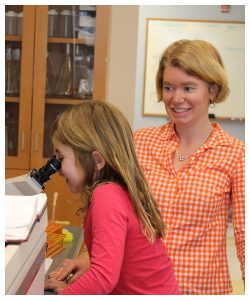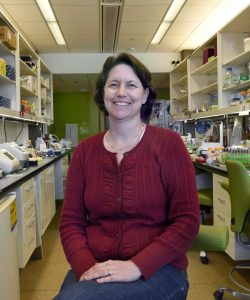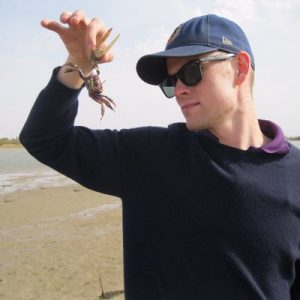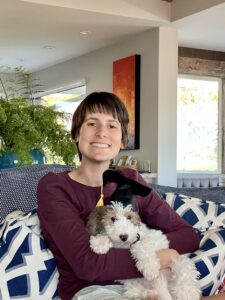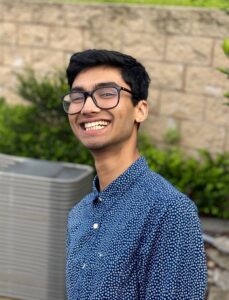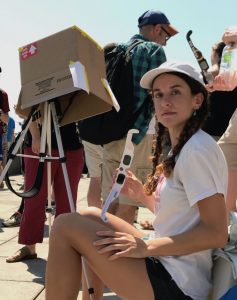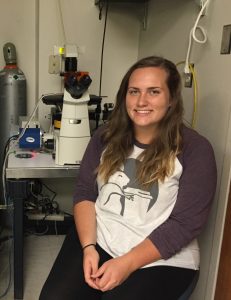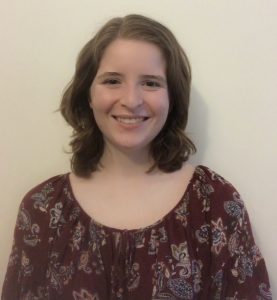Lab Members
Principal Investigator
Associate Professor of Biology, University of North Carolina at Chapel Hill; affiliated with Curriculum in Genetics, Biochemistry and Biophysics graduate program and Bioinformatics and Computational Biology graduate program
A.B. Princeton University, 1996
Ph.D. Duke University, 2001
I find thinking about cells and training people to be scientists an absolutely fascinating, challenging and rewarding life. I love new microscopes, puzzling data and starting new collaborations. You can read more about me here.
Lab Manager
B.S. University of Oregon, 1993
M.S. University of Illinois- Urbana-Champaign, 1999
Cloning Queen, Wrangler of Fungi, Pillar of Support.
Research Technician
Aamani Thulluru
B.S. Stetson University, 2020
Morphogenesis and structural change are often tied to specialized cellular function. I am studying the development of mononucleated cells into a syncytial cell in the human placenta. I hope to understand how morphogenesis is linked to changes in genetic output that result in the placenta’s diverse functions.
Postdoctoral Researchers
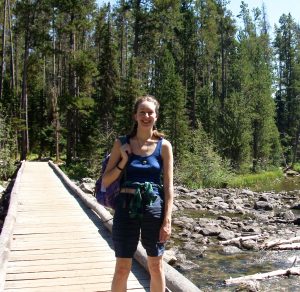 Christine Roden, Ph.D.
Christine Roden, Ph.D.
B.S. University of Pittsburgh, 2010
PhD Yale University, 2018
I study how cells use RNA sequence and structure to encode mesoscale biophysical properties of liquid-like droplets of protein and RNA. I am also interested in understanding and manipulating these liquid-like droplets in normal and diseased states.
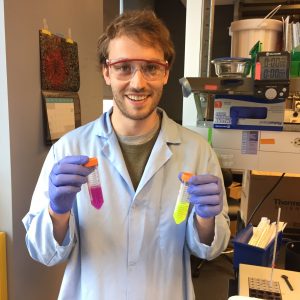 Wilton Snead, Ph.D.
Wilton Snead, Ph.D.
B.S. University of Pittsburgh, 2013
PhD University of Texas at Austin, 2018
I am interested in how cellular membranes compartmentalize and organize the cell to facilitate essential functions. In the Gladfelter Lab, I study how membranes control the patterning and assembly of liquid-like droplets of protein and RNA. I enjoy using diverse biophysics and microscopy toolsets to answer challenging questions in biology. I love science for the freedom to explore fascinating questions using new and creative approaches.
Madeline Keenen, Ph.D.
B.S. University of Arizona, 2014
PhD University of California at San Francisco, 2020
Diffusion of molecules through the nuclear pore is the most commonly studied form of nuclear signaling. However, the nuclear membrane is continuous with the endoplasmic reticulum and many protein complexes span the inner and outer nuclear membrane tethering both heterochromatin and the cytoplasmic cytoskeleton simultaneously. I am using the syncytial cells in the human placenta as a model to examine mechanisms of nuclear communication with the cytoplasm.
Ameya Jalihal Ph.D.
B. Tech SASTRA University, India, 2015
PhD University of Michigan, Ann Arbor, 2020
Cells are constrained by the rules of physics and chemistry, and yet are constantly pushing these limits to survive and thrive in challenging environments. In a fungal syncytium, the environment is sensed by many nuclei simultaneously, and they then have to respond to it by acting in concert. How do spatial organization, physical forces and chemistry of phase separation come together to build and protect the organism in such systems?
Grace Hamilton Ph.D.
B.S. Bates College, 2015
PhD University of Washington, 2020
How do septins, the most enigmatic element of the cytoskeleton, contribute to the exotic morphologies and cell divisions of marine fungi? I’m curious to see what the extant diversity of fungal septins can teach us about the rules governing these complex polymers. Passionate about teaching as well as research, I am a member of the SPIRE Postdoctoral Fellowship Program.
PhD UNC Chapel Hill, 2022
 Zachary Geisterfer, Ph.D.
Zachary Geisterfer, Ph.D.
B.S. University of Hawai’i at Hilo, 2017
PhD University of Wyoming, 2021
Molecular self-assembly is at the heart of many diverse biological processes, yet it’s not always clear how cells encourage self-assembling molecules to find one another at the right time and place, despite the hustle and bustle going on inside the cell. I’m interested in understanding more about the general mechanisms, both physical and biochemical, underlying the spatial organization of self-assembling networks, and how these types of interaction may influence cellular function and decision making.
B.A. Mount Holyoke College, 2013
Ph.D. Vanderbilt University, 2022
I am fascinated by understanding how small molecular differences can manifest dramatic changes to larger order dynamic architectures. Syncytial cells of the human placenta form elaborate three-dimensional structures necessary to support development of the fetus. I am interested in elucidating the role of the cytoskeleton in defining and maintaining these structures.
Graduate Students
Motivated by questions stemming from biodiversity and evolution, I am interested in exploring the cell biology of black yeasts isolated from marine environments surrounding Woods Hole, MA. The marine environment presents a variety of stresses for fungi that necessitate particular morphological adaptations. My project aims to develop genetic tools in these relatively uncharted organisms to study their unique morphogenesis.
I am working on understanding the nature and organization of the cytoplasm through intracellular particle tracking, as well as modeling the cell cycle in multinucleated cells to study asynchronous nuclear division.
Allie Skinkle
B.A. Rice University, 2019
I’m interested in how cells organize themselves through time and space during development. I study how spatial patterning of biomolecular condensates in syncytial cells of the placenta promotes invasive events critical to blastocyst implantation
 Brandy Curtis
Brandy Curtis
B.S. Grand Valley State University, 2019
Structure-function relationships are my jam. I’m interested in learning how distinct septin domains are tuned for different membrane properties and how both contribute to septin higher-order assembly.
 Alex Crocker
Alex Crocker
B.A. Hendrix College, 2016
Fungi can take on truly diverse morphologies and lifestyles. I study how they establish polarity landmarks within the cell, and how regulation of polarity establishment has been rewired to adapt different fungi to their environments. I am also a member of Tim Elston’s lab.
Evan Dage
B.S. Weber State University, 2015
I am taking both an evolutionary genetic and cell biological approach to studying fungi. I am interested in how environmental stressors such as temperature impact fungal morphogenesis in the genus Eremothecium. I am also co-advised with Daniel Matute.
Undergraduate Students
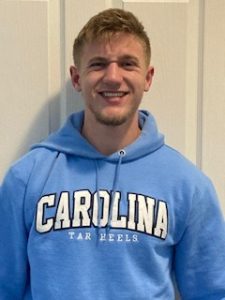
Noah Clifford
Class of 2023
Biology, B.S
Working with Alex
Joseph Holmes
Class of 2024
Biology, B.S
Chemistry & Spanish Double Minor
Working with Christine
 Katherine Wadkovsky
Katherine Wadkovsky
Class of 2025
Environmental Studies, B.A
Studio Art Minor
Working with Grace H.
Graduate and Postdoc Alumni
